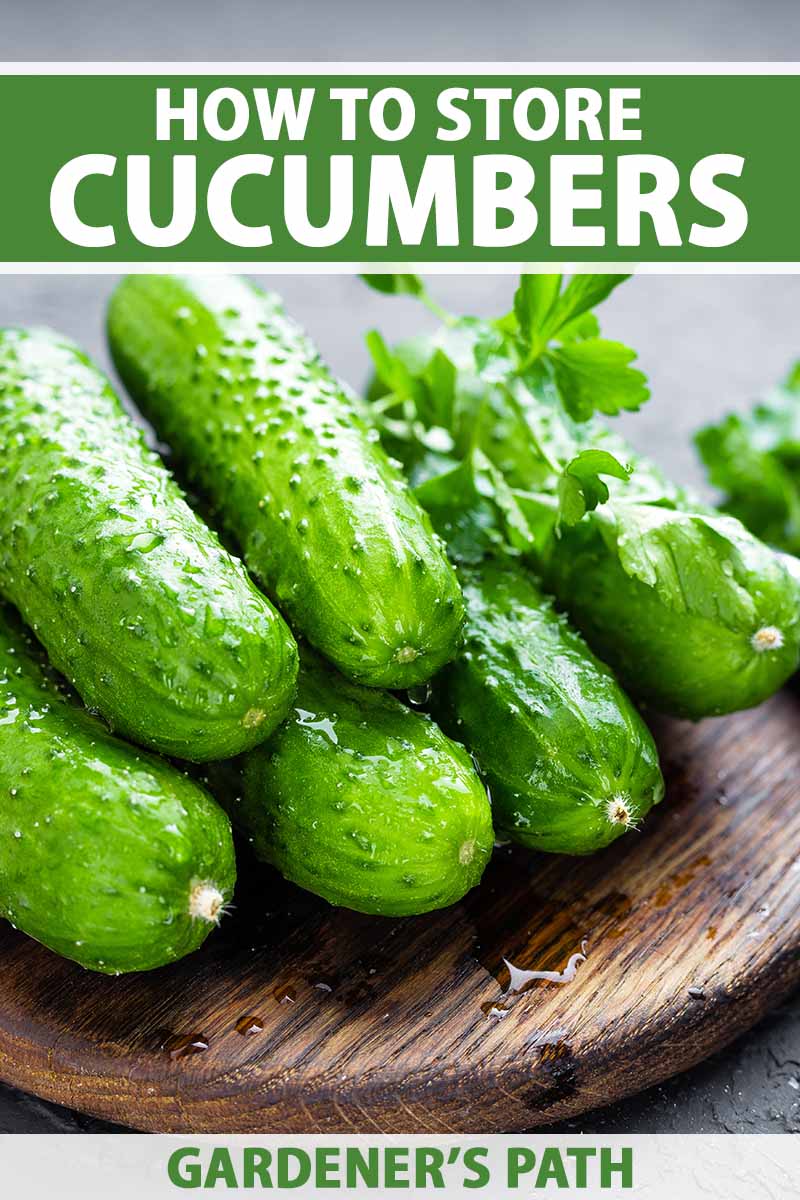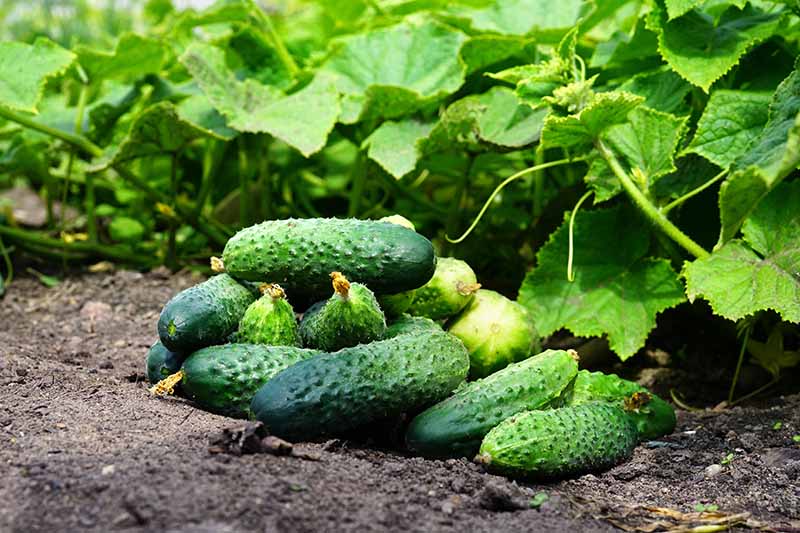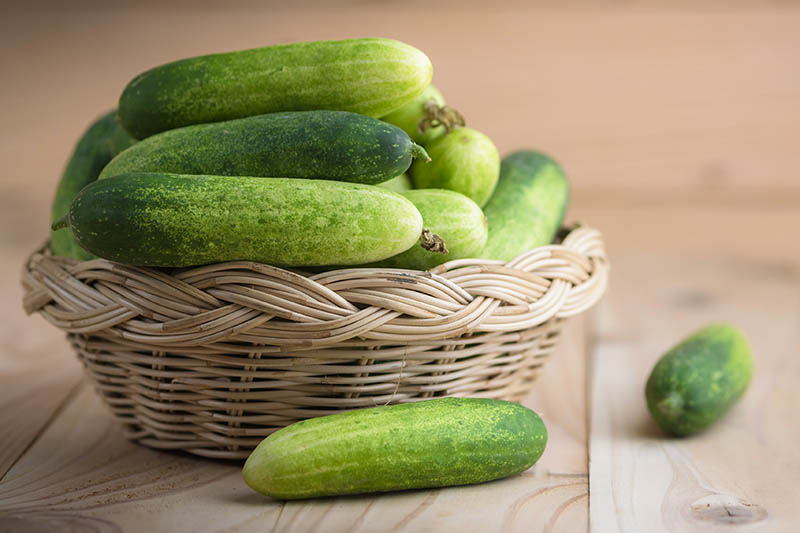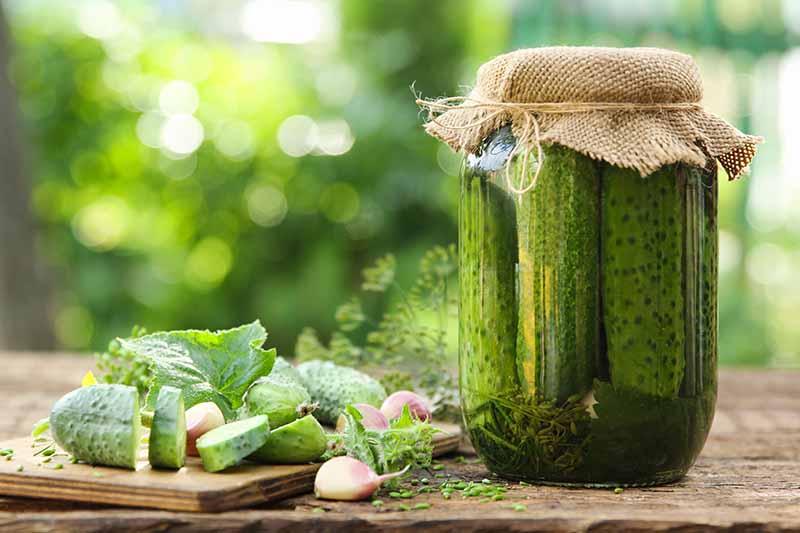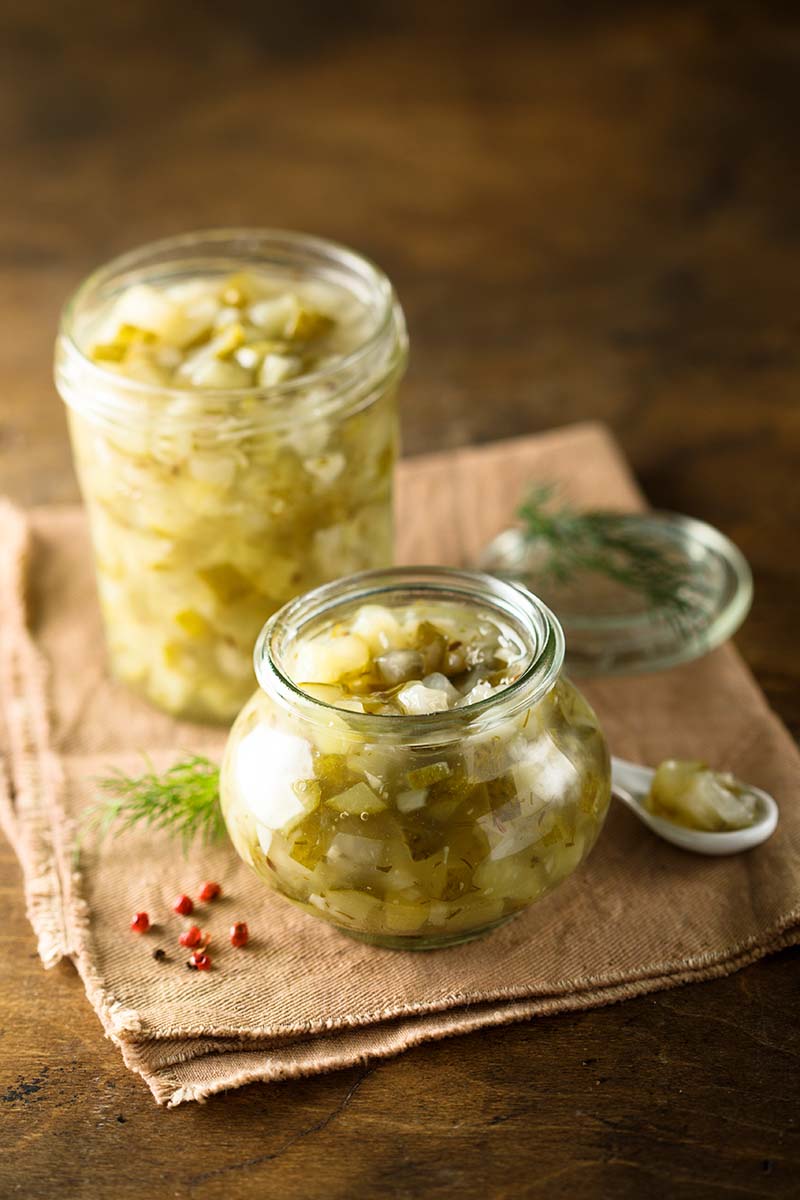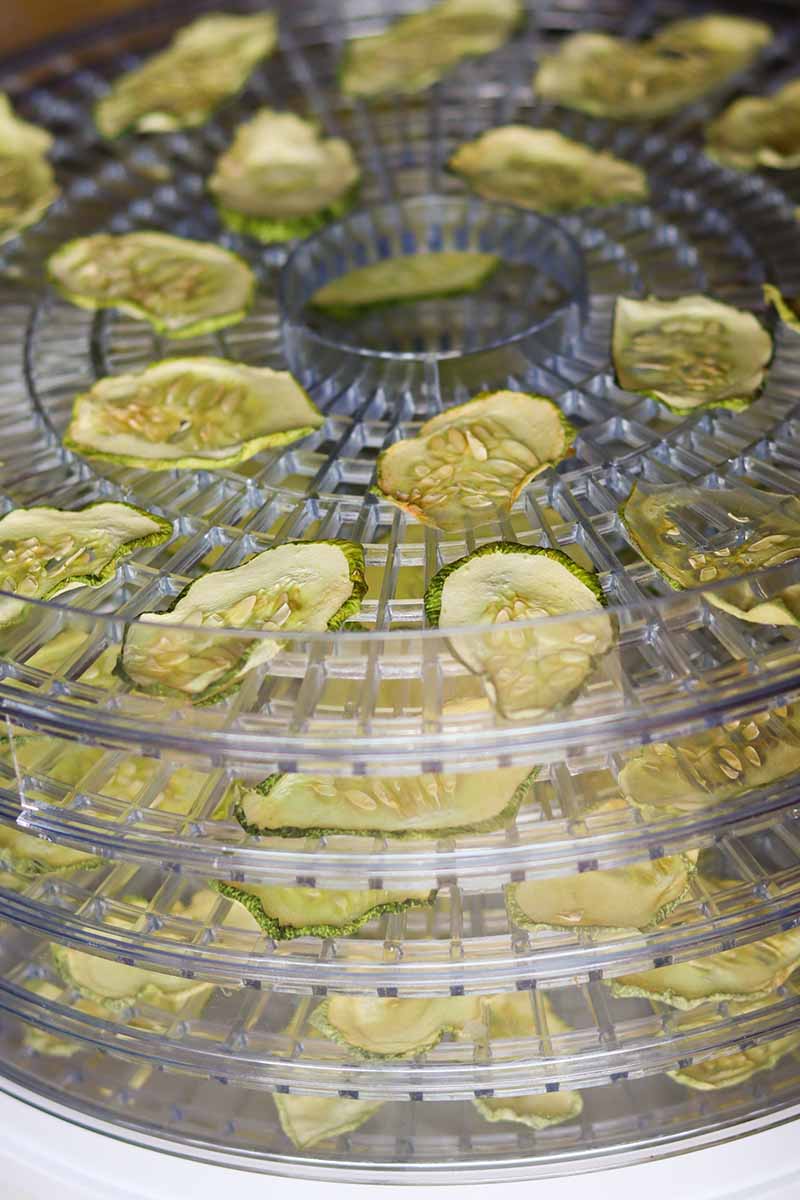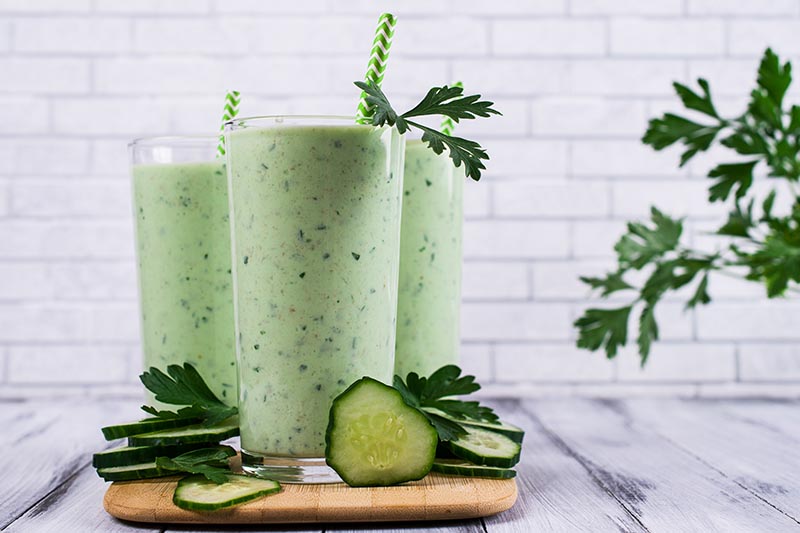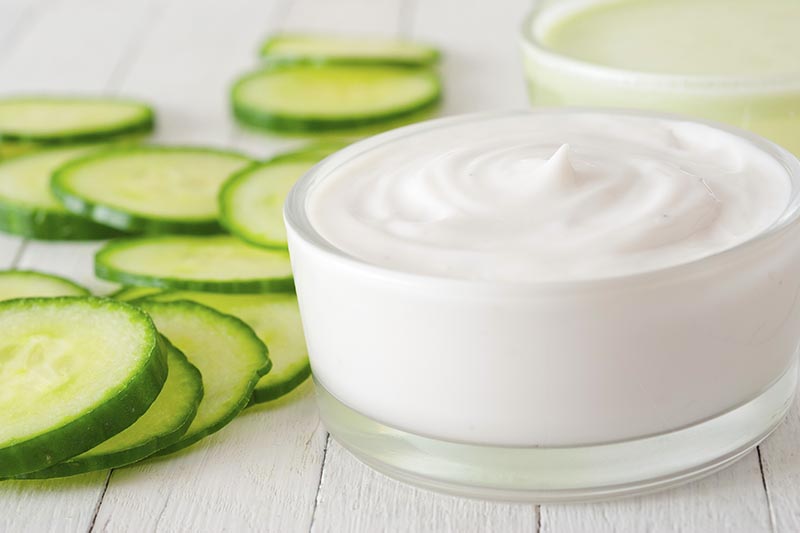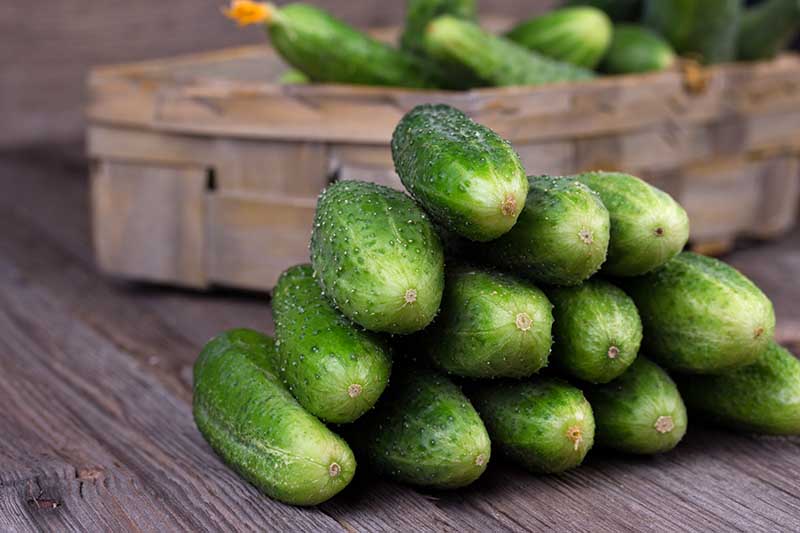Fortunately, there are several easy and delicious ways to store cucumbers for later. We link to vendors to help you find relevant products. If you buy from one of our links, we may earn a commission. I love cucumbers, so I grow a lot of them every year. If you are anything like me, then you will likely wind up with far more than you can eat right away. And while they might not be at their freshest for long, the great thing about these veggies is they are often even more delicious after being preserved. Whether pickled, juiced, or made into sorbet, there are so many exciting ways to store and use cucumbers!
Best at Room Temperature
While you may be partial to a cold cuke on a summer day, interestingly, they are actually best when stored at room temperature. Researchers from the University of California Davis found that cucumbers kept below 50°F are faster to decay, and more prone to wateriness and pitting, than those kept at room temperature. So a counter or a basket inside the pantry may be the best place for them. Ideally, they should be kept in a location out of direct sunlight that stays around 55°F, and can last for up to two weeks.
Refrigeration
You can still certainly choose to keep them in the fridge if you prefer cold cukes, or if the air temperature is too warm in your house. As long as they are stored properly, they can last for a week or so in the fridge. The crisper drawer is typically a good place for them, though you should be sure to keep them towards the front of the fridge, as the back can sometimes get too cold. Every fridge is different though, and it is a good idea to observe which area of your fridge is the warmest. Start by washing them off and removing any soft spots. Be sure to give them a chance to dry completely before storing. Wrap them in a clean paper towel, and place them in perforated plastic bags to allow for air circulation. Try to store them whole if possible. If you do need to use part of one and save the rest for later, just remember to cover the exposed edge with a little plastic wrap before returning it to the fridge. Once sliced, cucumbers should be consumed within a couple of days. Store cut cukes in an airtight container or sealed bag, and keep refrigerated until you’re ready to use them.
Pickles and Relish
What comes to mind first when you think of preserving cucumbers? Pickling is perhaps the most common way to store cukes long-term. And with so many different methods and recipes available, you could probably make a different one every single time. There are vinegar pickles, lacto-fermented pickles, and quick refrigerator pickles. You can make sour dill pickles, sweet cinnamon ones, or bread and butter style, which are somewhere in between in terms of flavor. Or, you could try shredding and covering them in a vinegar brine to make relish. If you are interested in trying your hand at fermentation, check out this mouth watering recipe for lacto-fermented dill pickles on our sister site, Foodal. This method involves soaking cucumbers in a natural salt brine, a process in which bacteria converts sugars into lactic acid that preserves the pickles. Not only are these pickles crunchy and delicious, there is increasing evidence that lacto-fermented foods are beneficial to gut health. Among other benefits, studies suggest that these foods can improve digestion, reduce inflammation, and help support our immune systems. No matter what recipe you choose, just make sure to always follow directions carefully for safe preparation and storage.
Canning
Canning is a great way to preserve your pickles or other cucumber concoctions for longer periods. Many recipes such as cucumber relish, salsa, and jelly can be made in large batches and canned for later use. When properly prepared, canning can preserve the shelf life of your harvest for a year or more. And there’s no need to worry about pressure canning. Most canning instructions for cucumbers can be done with the water bath method since pickles, jams, and other recipes of this kind typically call for the addition of high-acid ingredients such as vinegar. Again, always use a recipe that is formulated for home canning, and be sure to follow the instructions exactly. If you are new to canning and would like to learn more, this canning guide on Foodal is a great place to start. Cucumber jelly offers a uniquely fresh flavor that goes well with cheese and greens on bread. Most recipes call for combining strained cucumber juice with vinegar, sugar, and pectin, and then processing in a water bath canner. Fresh mint, lemon, or ginger can also be added to enhance the flavor.
Dehydration
Another fun idea is to make cucumber chips. Just cut fresh cukes into thin slices, season as desired, and dry in a food dehydrator set to low for about 12 hours, or until they reach the desired level of crispness. You can also do this in an oven on a low temperature, around 135°F, for a few hours. Once thoroughly dried, chips can be stored in a cupboard in an airtight container.
Freezing
While cucumbers don’t freeze well in their original form, they are easy to juice or puree and freeze in ice cube trays. You can peel them or not, prior to juicing. The skin and seeds contain most of the nutrients, so I like to leave the peels on. Once frozen, just pop out the cubes and store them in a freezer container or bag. You can drink the juice straight, or add the cubes to smoothies or other types of fruit juice. Stored properly, the cubes should last for up to a year in the freezer. It is also possible to freeze them by soaking the fruit in a brine solution first. The resulting “freezer pickles” can be used in relish, added to salads, or eaten on their own. This method basically involves sweating cucumber slices in salt with sliced onions, and then freezing them in a brine made with vinegar and sugar. To make freezer pickles, dice a large onion and cut two quarts of cucumbers into thin slices. Layer the cucumbers, onions, and one to two tablespoons of salt in a bowl or baking pan, starting with the cukes, then adding salt and onions, and repeating. Cover the mixture with plastic wrap and let it sit at room temperature for at least a couple of hours. Rinse to remove the salt, then return the vegetables to the bowl. Meanwhile, combine one and a half cups of sugar with half a cup of white distilled or apple cider vinegar in a saucepan, and set over gentle heat to dissolve the sugar. Stir, and add this mixture to the cucumbers. Stir to combine. The mixture can be frozen in any freezer safe container, bag, or glass jar, leaving half an inch of headroom at the top. It is easy to freeze individual portions in ice cube trays or other small containers and defrost as needed, rather than having to to use it all at once. When you are ready to use them, transfer to the refrigerator to thaw. Freezer pickles will last for up to 12 months. Once thawed, they should be stored in the refrigerator and eaten within two weeks.
Other Ideas
Looking for more ideas? Try this recipe for a cool cucumber and elderflower sorbet that’s perfect for hot summer days, from our sister site, Foodal. Or forget eating the excess altogether, and make a cooling skin cream instead. Just blend one cup of fresh cucumber juice with the pulp strained out with a quarter of a cup aloe vera and a quarter of a cup coconut oil. You can add a few drops of vitamin E oil to help preserve the cream, as well as your favorite essential oil if you choose. Refrigerate and apply as needed to your face or body to soothe burns or inflamed skin. The cream should stay fresh in the refrigerator for a few months or more. What are your favorite ways to store and use cucumbers? Share your recipes and tips in the comments below! Want to learn more about growing cucumbers for long term storage? Read these articles next to help you select the best types for your needs:
9 of the Best Pickling Cucumbers to Grow in Your GardenWhat Are the Different Types of Cucumber Plants?Top 33 Cucumber Varieties to Grow at HomeHow to Grow Cucumbers on a Fence
